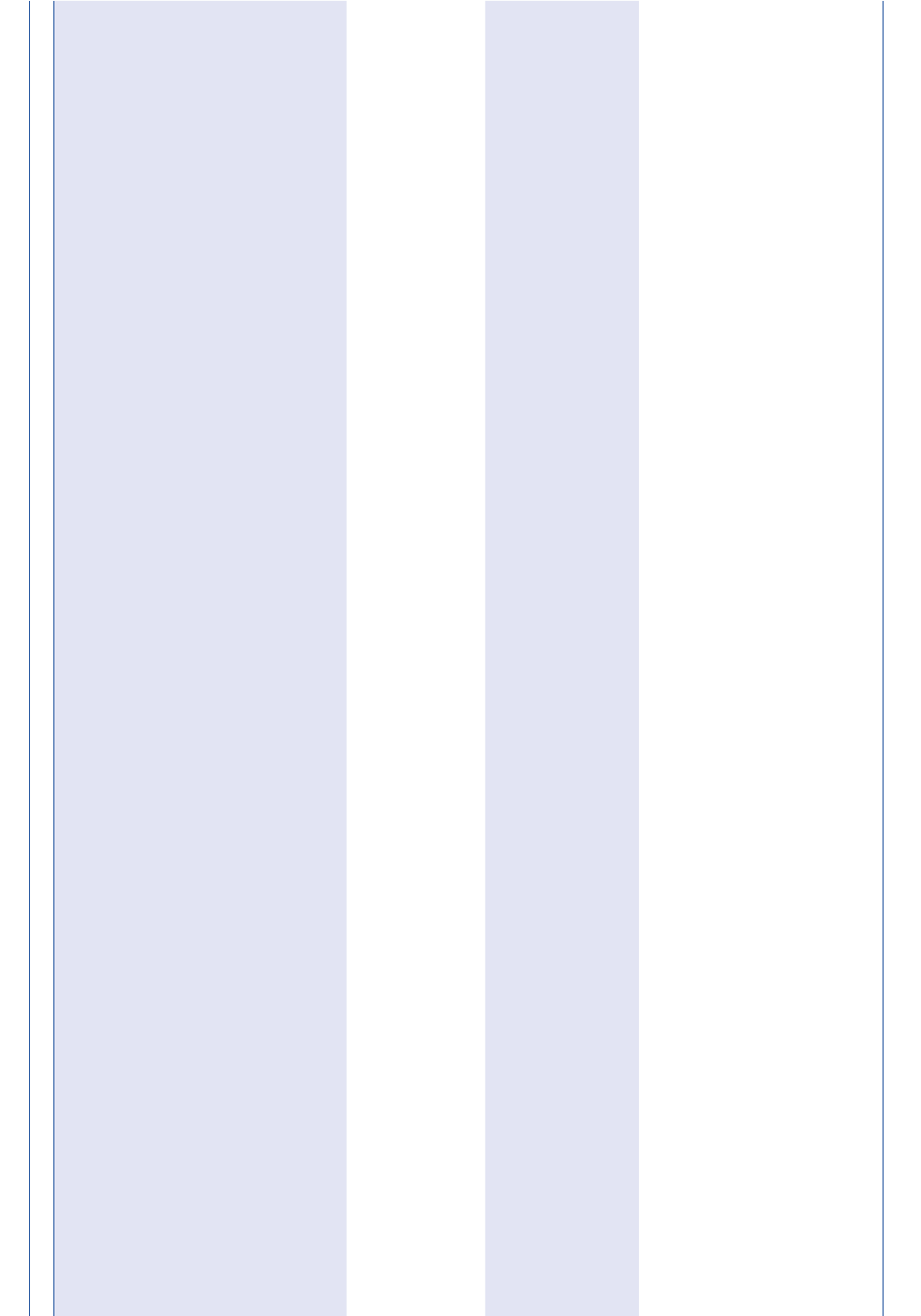
University of Richmond
UR Scholarship Repository
05"'-*-&5 "2*152!*(" 1(-,0 05"'-*-&5
Cognitive-Behavioral &erapy for ADHD in
College: Recommendations “Hot O% the Press”
Laura E. Knouse
University of Richmond*),-20$/("'+-,#$#2
-**-41'(0 ,# ##(1(-, *4-/)0 1 ';.0"'-* /0'(./("'+-,#$#2.05"'-*-&5% "2*15
.2!*(" 1(-,0
/1-%1'$ -2,0$*(,&05"'-*-&5-++-,0 ,#1'$ "'--*05"'-*-&5-++-,0
:(0/1("*$(0!/-2&'11-5-2%-/%/$$ ,#-.$, ""$00!51'$05"'-*-&5 1"'-* /0'(.$.-0(1-/51' 0!$$, ""$.1$#%-/(,"*20(-,(,
05"'-*-&5 "2*152!*(" 1(-,0!5 , 21'-/(6$# #+(,(01/ 1-/-%"'-* /0'(.$.-0(1-/5-/+-/$(,%-/+ 1(-,.*$ 0$"-,1 "1
0"'-* /0'(./$.-0(1-/5/("'+-,#$#2
$"-++$,#$#(1 1(-,
,-20$ 2/ -&,(1(3$$' 3(-/ *:$/ .5%-/(,-**$&$$"-++$,# 1(-,07-191'$/$008 e ADHD Report
,-2&201#-( #'#

8 • The ADHD Report © 2015 The Guilford Press
Cognitive-Behavioral Therapy for
ADHD in College: Recommendations
“Hot Off the Press”
Laura E. Knouse, Ph.D.
ADHD leads to impairment across the
lifespan including during the college
years. An increasing number of studies
document the academic, social, and psy-
chological impairments associated with
the disorder in college (DuPaul, Wey-
andt, O’Dell, & Varejao, 2009). Yet, until
very recently, there were no published
studies on cognitive-behavioral treat-
ment approaches specifically tailored
to college students with ADHD. Over
the past year, however, four research
groups have published work on skills-
based cognitive-behavioral treatments
for this population. My goal in this ar-
ticle is to briefly summarize these find-
ings and to identify key recommenda-
tions for clinicians working with college
students with the disorder that emerge
across studies. In addition, I will inte-
grate findings from basic research on
ADHD and memory strategies that my
colleagues and I have recently complet-
ed and make the case for inclusion of
these strategies into skills-based ADHD
treatments for college students.
It is now fairly well established that
skills-based, cognitive-behavioral treat-
ment (CBT) approaches can be effica-
cious for adults with ADHD (Knouse
& Safren, 2014). Depending on one’s
interpretation of the American Psycho-
logical Association Division 12’s criteria
for empirically supported treatments,
based in particular upon the studies
conducted by Safren and colleagues
(2010) and Solanto and colleagues
(2010), CBT for adult ADHD meets cri-
teria as at least a “probably efficacious
treatment.” Across studies, teaching
adults with ADHD to consistently use
specific compensatory behavioral skills
(e.g., organization and planning) and to
recognize and cope with the thinking
patterns that block the use of those skills
has been shown to reduce the impact of
symptoms. Likewise, specific training
in the use of organization and planning

© 2015 The Guilford Press The ADHD Report • 9
skills has been shown to help the func-
tioning of both children (Abikoff et al.,
2013) and adolescents (Langberg, Ep-
stein, Becker, Girio-Herrera, & Vaughn,
2012) with ADHD in the academic set-
ting. Yet only recently have studies
of specific applications with college
students been published, although the
subject has been covered in the clini-
cal practice literature (e.g., Ramsay &
Rostain, 2006). Importantly, these re-
cent studies are adaptations of existing
skills-based CBT approaches for adults
more generally. There are good reasons
to predict that modifications to general
adult protocols for ADHD treatment
would be necessary to achieve optimal
results, including the unique develop-
mental context of emerging adulthood
(see Fleming & McMahon, 2012, for a
review) and the heavy cognitive and
organizational load that students must
carry. Each of these research groups has
taken an independent course in adapt-
ing existing interventions, and thus
examining these studies for points of
convergence can provide useful infor-
mation for clinicians working with this
population.
Summary details of four recent stud-
ies are presented in Table 1. The studies
represent a variety of choices in terms of
research design and clinical approach.
Readers are invited to examine Table 1
to get a general sense of the approaches
and findings from each study and may
access each manuscript if they would
like more details. Taken together, these
studies demonstrate that tailored CBT
approaches for college students with
ADHD can have a positive impact on
inattentive symptoms in particular and
on academic functioning and use of
skills.
Some clinical take-homes from these
studies include:
•Fit the treatment to the contours of
the semester
•Measure skill use and functioning,
not just symptoms
•Consider the power of the group
•Provide more frequent cues and
support
•Choose skills suited to the profes-
sional learner
FIT THE TREATMENT TO THE
CONTOURS OF THE SEMESTER
The first theme emerging across these
studies is the importance of timing the
CBT intervention so that it fits within
the constraints of the academic se-
mester. Interestingly, the four research
groups appear to independently have
determined that an intervention 8–10
weeks in length (mean of 8.5 weeks, to
be precise) starting a few weeks into
the semester is ideal for this purpose.
Several researchers emphasize the im-
portance of starting early enough in
the semester to get some skills in place
before the high-stress periods of mid-
terms and final exams while still allow-
ing sufficient time for recruitment and
pre-screening at the start of the semes-
ter. In their chapter on CBT for college
students, for example, Ramsay and Ros-
tain (2006) suggest using the finals pe-
riod as a sort of final exam for the skills
learned in CBT across the semester;
Fleming, McMahon, Moran, Peterson,
and Dreessen (2014) similarly coached
their clients to prepare for the “high de-
mand period” at the end of the semester
using previously practiced strategies.
However, clinicians in college coun-
seling centers have little control over
when clients with ADHD seek ser-
vices, and students often wait until the
situation is exceedingly dire—often, at
the end of the semester—before seek-
ing help. However, if a clinic offered a
structured CBT program for students
with ADHD each semester, as described
above, then students who present to
the clinic “in crisis” right before finals
could be strongly encouraged to enroll
in the more structured program the fol-
lowing semester.
MEASURE SkIll USE AND
FUNCTIONING, NOT JUST
SYMPTOMS
Measuring treatment outcomes as often
as weekly is an important element of
CBT approaches even when they are not
part of a formal research study. Many
CBT clinicians employ short, symptom-
based rating scales for this purpose. Re-
sults from recent studies suggest that
clinicians (and researchers!) should
consider expanding their assessments
to include skill use and functioning. To
address skill use first, at the heart of CBT
for adult ADHD lies the idea that—with
practice and support—clients can learn
behavioral skills and cognitive strate-
gies to work around their ADHD symp-
toms even when those symptoms per-
sist into adulthood (Knouse, 2015). All
of the treatment approaches reviewed
here aim to help clients learn specific
skills that will accomplish this goal, and,
consistent with the mechanism of action
for CBT, several researchers specifically
measure the extent to which clients are
using behavioral and cognitive skills.
For example, Anastopoulos and King
(2015) measured and demonstrated
pre-to-post changes in ADHD knowl-
edge, behavioral skill use, and changes
in maladaptive cognitions, as each of
these were hypothesized mechanisms of
change in their intervention. Clinically,
having clients complete formalized as-
sessments of skill use during treatment
could serve a self-monitoring function
and may increase clients’ self-efficacy
as they see evidence that their behaviors
are changing even though their symp-
toms may still present challenges.
The recent studies also indicate that
measuring improvements in function-
ing in addition to symptoms may be
both important and useful. First, func-
tional outcomes may be more in line
with clients’ goals for themselves. Eddy,
Will, Broman-Fulks, and Michael (2015)
noted that 3 of the 4 clients in their case
series prioritized the functional goals of
being able to get work done efficiently
rather than goals framed in terms of
symptom reduction. They also found
that some clients reported significant
improvements in functioning after
treatment even when there was little
movement on symptom-based ratings
scales. Thus, assessments of function-
ing may not only be more meaningful
to the client but may be more sensitive
to treatment-related change.
Busy college counseling centers re-
quire assessment tools that are time-
efficient, and therefore rating scales
tend to be preferred. To assess function-
ing, both LaCount, Hartung, Shelton,
Clapp, and Clapp (2015) and Eddy and
colleagues (2015) used the Weiss Func-
tional Impairment Rating Scale (Weiss,
2000), which may be a helpful tool to

10 • The ADHD Report © 2015 The Guilford Press
TABLE 1. Recent Studies on CBT for College Students with ADHD
Study Treatment Approach Research Design & Participants Findings Notes
Anastopoulos & King
(2015)
8 weekly group CBT sessions and individual
mentoring sessions
Open trial across 3 semesters Significant increases in ADHD knowledge (d =
2.23); Behavioral strategies (d = 1.04); and
on one of two measures of adaptive thinking
(d = .97)
“ACCESS is best viewed as an integral com-
ponent of an overall multimodal treatment
approach that includes other interventions
(e.g., medication management, counseling,
tutoring).”
Content adapted from Safren et al. (2005) and
Solanto et al. (2011)
43 enrolled; post-treatment data for 40 Significant decreases in self-reported inatten-
tive symptoms
Booster sessions offered the following semester 86% attended 80%+ group sessions; 84%
for mentoring portion
Percent using disability services increased from
19% to 57%
Each group session included ADHD knowledge,
behavioral skills, and cognitive therapy
Focus on increasing client use of campus sup-
port services
Mentoring focused on skills application, goal-
setting, and monitoring
Eddy, Canu, Broman-
Fulks, & Michael (2015)
8 weekly individual CBT sessions adapted from
Safren et al. (2005)
Case series of 4 participants assessed at
Sessions 1 and 8
Treatment attendance and satisfaction were
high for all participants
3 of the 4 participants articulated their top treat-
ment goal as working more efficiently rather
than reducing ADHD symptoms, per se
One support telephone call per week to target
skill application and to provide a reminder for
the next session
In general, measures of functional impairment
showed greater change from pre-to-post than
measures of ADHD symptoms
Client workbook
LaCount, Hartung,
Shelton, Clapp, &
Clapp (2015)
10 weekly individual and group sessions adapted
from Safren et al. (2005)
Open trial of 17 undergraduate and
graduate students; 12 (70%) completed
post-intervention measures
For completers, significant decreases in self-
reported inattentive symptoms (d = .93)
Future directions include examining effects of
treatment components (individual vs. group;
specific skills); see text for description of
recent study along these lines
Group components provided social support and
greater exposure to material
Completers attended 85% of individual
sessions and 77% of group sessions
Significant reductions in impairment at school (d
= .51) and at work (d = .63)
Individual sessions focused on each client’s indi-
vidual goals and skills practice (homework)
Fleming, McMahon,
Moran, Peterson, &
Dreessen (2015)
8 weekly group sessions with 10–15-minute
coaching telephone calls
Randomized controlled trial comparing 17
participants receiving intervention to 16
participants receiving handouts covering
ADHD self-management skills
Both groups significantly improved in their DSM-
IV inattentive symptoms post-treatment; trend
toward greater improvement in the treatment
group (d = .55)
Clinical response rate to the handout control con-
dition (25%) was comparable to rates achieved
with active treatment controls (e.g., supportive
group therapy) suggesting its potential as a
low-cost intervention
1 booster session at the start of the following
quarter
Participants in the treatment group attend-
ed 88% of sessions with one drop-out
At 3-month follow-up, treatment group had sig-
nificantly lower inattentive symptoms (d = .81)
Based on dialectical behavior therapy: empha-
sized mindfulness skills but more heavily
integrated organization and planning skills
than typical DBT
Treatment group showed significantly greater
improvements in quality of life at post-treat-
ment (d = .90) and gave high helpfulness
ratings to most treatment components
Designed to fit developmental context of emerg-
ing adults (e.g., peer support)

© 2015 The Guilford Press The ADHD Report • 11
use in clinical practice. With respect to
skills, well-established commercially
available measures like the Learning
and Study Strategies Inventory (LAS-
SI; Weinstein & Palmer, 2002) could be
useful for showing treatment-related
change but may be too burdensome for
frequent use. To measure utilization of
skills like calendar use and goal setting,
Anastopoulos and King (2015) devel-
oped the 30-item Strategies for Success
scale. Likewise, Solanto and colleagues
(2010) developed the 24-item On Time
Management, Organization, and Plan-
ning Scale (ON-TOP) to measure use
of skills in their trial of group CBT for
adults. Clinicians could seek out these
or similar scales to use with clients in
CBT or could choose a customized list
of items tapping the skills that each cli-
ent will target in therapy. Regardless of
the method, tracking progress in treat-
ment using multiple methods gives
both clinician and client more informa-
tion to use in shaping the treatment as it
evolves and in highlighting the results
of the client’s efforts, providing rein-
forcement for behavior change.
CONSIDER THE POwER OF
THE GROUP
Group treatments offer several ad-
vantages, some of which may be even
more salient for college students. Three
of the recent studies used a group for-
mat, either as the primary intervention
(Fleming et al., 2015) or in tandem with
individual sessions (Anastopoulos &
King, 2015; LaCount et al., 2015) to cre-
ate a multimodal treatment. Given the
importance of peer relationships dur-
ing this developmental period (Flem-
ing & McMahon, 2012), LaCount and
colleagues (2015) note that the group
context provides an opportunity to re-
duce ADHD–related stigma through
contact with students struggling with
similar issues. Further, college students
are likely to have experiences and daily
challenges more similar to one another
than to a group of adults from the gen-
eral population, increasing the opportu-
nity for empathy, social support, and es-
pecially modeling of skill use within the
group (LaCount et al., 2015). In my own
clinical experience, the group context
also helps reluctant students accept the
fact that they need to use skills and do
things differently than their peers with-
out ADHD—a struggle noted by others
working with college students (Ramsay
& Rostain, 2006; Anastopoulos & King,
2015). And as noted by Anastopoulos
and King (2015), allowing students to
interact and support one another out-
side of the group can be a way to embed
social cues for skill use in the environ-
ment more frequently throughout the
week.
(Clinicians should of course lay
out the ground rules for confidentiality
within the group and facilitate discus-
sion within the group about whether
the members would like to interact
outside the group context.) Further, the
students themselves can introduce new
skill tips and tricks to the group and
provide testimonials about their own
successes and struggles using the tech-
niques.
In addition to affording certain thera-
peutic advantages, groups are certainly
time- and cost-effective, which is an im-
portant consideration in college coun-
seling centers with limited resources.
Yet groups are not without their own
unique challenges. First, since CBT skills
groups are usually highly structured,
the therapist must have the ability to
skillfully guide members back on track
when they get off topic. Setting expecta-
tions about the structured nature of the
group up front is exceedingly important
in this regard. Second, because mem-
bers may feel less of a personal stake
in the group than they do in individual
therapy, therapists should emphasize
the importance of attendance and the
importance of each group member to
the overall success of the group thera-
peutic endeavor. Relatedly, the therapist
needs to be sensitive to the engagement
of all members in the group process and
allow time for each to discuss his or
her experiences and the results of skills
practice from the prior week.
In order to provide individualized
attention to clients while capitalizing on
the advantages of the group, LaCount
and colleagues (2015) and Anastopou-
los and King (2015) developed interven-
tions with both group and individual
components. For both research groups,
the goals of the individual component
were to focus on each client’s application
of the skills covered in group therapy
and to aid the client in setting concrete
goals and monitoring progress toward
those goals (e.g., completion of weekly
therapy homework assignments). Thus,
adding an individual component to a
group-based intervention allows for
more individualized trouble-shooting
of skill use and greater accountability
for students to follow through on skills
practice. In these studies, graduate stu-
dents served as individual therapists.
However, at schools without graduate
programs or with fewer resources, in-
dividual peer coaching (Zwart & Kalle-
myn, 2001) centering around skill appli-
cation and goal-setting combined with
therapist-led groups might be a feasible
alternative.
PROvIDE MORE FREqUENT CUES
AND SUPPORT
A week is a long and action-packed pe-
riod of time in the life of a college stu-
dent, and many students with ADHD
find it difficult to maintain their engage-
ment with newly learned skills between
sessions. All of the recently developed
treatments addressed this challenge by
providing some form of reminders or
cues for skills use between weekly ses-
sions. As mentioned above, two treat-
ments involved full individual therapy
components in addition to group ses-
sions. Eddy and colleagues (2015) pro-
vided individual therapy augmented
with one supportive telephone call per
week between sessions. The purpose of
the call was to provide guidance with
skills and homework assignments as
needed, as well as to remind the par-
ticipant of his or her next appointment.
Participants also received the Mastering
Your Adult ADHD workbook (Safren,
Sprich, Perlman, & Otto, 2005) to guide
their between-session practice. Flem-
ing and colleagues (2015) also provided
10–15 minute coaching telephone calls
that focused on helping clients apply
and generalize the skills learned in
the 90-minute group sessions to their
daily lives. Thus, each of these clinical
research groups has recognized the im-
portance of treatment components that
help clients generalize skills beyond the
weekly therapy session. (As I often say
to my clients, the therapy hour is less
than 1% of your week, and if nothing
changes outside of that hour, we have
missed the boat!)

12 • The ADHD Report © 2015 The Guilford Press
In addition to individual sessions,
peer coaching or mentoring, and coach-
ing telephone calls, there may be other
creative ways to help college students
generalize skills to their daily lives.
Technology may provide some help-
ful, low-cost routes. For example in a
CBT skills group that I ran, I sent short
emails mid-week containing self-moni-
toring questions clients could ask them-
selves regarding their use of skills so
far that week and brief coaching about
either maintaining skills or getting back
on track. Since many students carry
smartphones with them, short emails
(short = more likely to be read) or text
messages may be a useful way to pro-
vide accessible cues. Clients can also
be coached to cue themselves by us-
ing the calendar and alarm features on
their smartphones to set reminders for
skill check-ins, as suggested by Safren
and colleagues (2005). More frequent
and intense support for skill applica-
tion in daily life is often needed to help
clients generalize outside the clinic, and
even clinicians in settings with fewer
resources can find opportunities to cue
skills outside of session.
CHOOSE SkIllS SUITED TO THE
PROFESSIONAl lEARNER
In many ways, college is not like the
“real world.” Some aspects of life may
be relatively less burdensome (e.g., han-
dling daily responsibilities like cooking
and home maintenance, although many
college students also manage house-
holds, work full-time for pay, and take
care of family members. Thus treatment
must always be tailored to the needs
of each client.). Others may be more
intense and challenging (coordinating
and completing assignments requiring
disparate skill sets; learning, retaining,
and applying large amounts of differ-
ent types of information over varying
lengths of time—all while resisting nu-
merous opportunities for procrastina-
tion). Recognizing the unique challeng-
es of college for students with ADHD,
each research group made adaptations
to the content of the adult-focused in-
terventions they based their treatments
upon (see Table 1).
First, several authors highlight the
need to intensely target procrastina-
tion and avoidance patterns in college
students. Ramsay and Rostain (2006)
highlight the role of procrastination
and avoidance as responses to task-re-
lated anxiety and maladaptive thoughts
that compound functional impairment
in the long-term. In their case series,
Eddy and colleagues (2015) recom-
mend moving content and skills related
to procrastination to the very begin-
ning of treatment and highlighted the
role of cognitive reappraisal skills in
reducing anxiety and cueing active skill
use instead of avoidance—a point also
emphasized by Anastopoulos & King
(2015). The mindfulness skills taught
by Fleming and colleagues (2015) in
their DBT approach can also be used in
the service of reducing the automatic,
reactive avoidance triggered by nega-
tive thoughts and emotions (Knouse &
Mitchell, 2015).
Second, every study described here
placed heavy emphasis on organiza-
tion, time-management, and planning
skills to help college students manage
and balance the diverse tasks that de-
mand their attention. These skills are
at the heart of CBT for adults in general
(Safren, Perlman et al., 2005; Solanto,
2011) and should also be a core compo-
nent of work with college students. In
fact, in an interesting next-step study
recently presented at the annual con-
ference for the Association for Behav-
ioral and Cognitive Therapies (ABCT),
LaCount, Hartung, and Shelton (2014)
reported results from a trial of a very
brief (3-session) group-based interven-
tion adapted from Solanto (2011) and
focusing only on organization and
time management skills (scheduling,
breaking down tasks and self-reward,
prioritizing and task lists). Recruiting
undergraduates with elevated scores
for ADHD symptoms and impairment,
LaCount and colleagues (2014) found
that relative to a comparison group (n
= 16), the group receiving the brief in-
tervention (n = 25) showed a significant
reduction in Inattentive symptoms of
ADHD. Means were also in the hypoth-
esized direction on a measure of organi-
zation, time-management, and planning
skills, although the differences did not
reach significance. The study demon-
strated that even a brief intervention
targeting critical areas of impairment for
people with ADHD may be helpful and
further supports the importance of orga-
nization, time-management, and plan-
ning skills in helping college students
with ADHD function more effectively.
Finally, I would like to suggest that
researchers and clinicians working with
college students with ADHD consider
incorporating specific empirically sup-
ported study skills and strategies into
their CBT work. Only one of the treat-
ment approaches reviewed here, that of
Anastopoulos and King (2015), appears
to have incorporated specific study
skills and strategies: one session each
containing information on getting the
most from classes, studying effectively,
and strategies for taking exams. To con-
clude this article, I would like to present
the case for more frequent incorpora-
tion of study strategies into CBT for col-
lege students with ADHD—specifically,
the strategy of retrieval practice, or test-
enhanced learning.
As professional learners, college stu-
dents are tasked with encoding, retain-
ing, and retrieving larger amounts of
more diverse information than perhaps
at any other point in their adult lives.
For much of this learning, it is incum-
bent upon the student to choose the tim-
ing and frequency of study as well as
the learning techniques to be employed.
Critically, in basic research on memory,
adults with ADHD tend to show the
most substantial memory deficits when
tasks require such self-regulated, effort-
ful memory encoding (Holdnack, Mo-
berg, Arnold, Gur, & Gur, 1995; Roth et
al., 2004; Seidman, Biederman, Weber,
Hatch, & Faraone, 1998). For example,
my colleagues and I (Knouse, Anasto-
poulos, & Dunlosky, 2012) conducted a
study in which we gave adults with and
without ADHD an unstructured, open-
ended learning task: learn 40 noun-noun
word pairs (e.g., garden-sister) printed
on one side of a set of cards for a later
test in which the participant was given
the first word and had to recall its mate.
Participants were given no time limits
nor any hints as to how they should
study the words. On this task, a group
of adults with ADHD (n = 34), who did
not differ from a non-ADHD group (n =
34) in terms of estimated full scale IQ or

© 2015 The Guilford Press The ADHD Report • 13
education, recalled significantly fewer
words (M = 22.48, SD = 13.06 vs. M =
29.96, SD = 10.89; Cohen’s d = .62). In
practical terms, if this had been a grad-
ed quiz, the non-ADHD group would
have earned, on average, a solid C com-
pared to an F average in the group with
ADHD.
These results beg the question of
whether, as a group, adults with ADHD
approached the task differently—in a
way that could explain their differences
in learning. In other words, what were
they doing or not doing when asked to
study the words? To answer this ques-
tion, we measured a variety of possible
strategy approaches the participants
could have used as well as their self-re-
ported effort and the time they chose to
spend on the task. We found that partic-
ipants’ self-testing behavior—or, the ex-
tent to which they quizzed themselves
on the items while studying—best dif-
ferentiated the behavior of the groups.
Fifty-one percent of people in the
ADHD group were observed to self-test
even once compared to 82% of the non-
ADHD group. Although we were not
able to directly test whether self-testing
produced the between-group differenc-
es in memory test performance, failure
to self-test was associated with poorer
memory performance across groups
(Cohen’s d = 1.11). And although our
study did not specifically test college
students, our results dovetail with an
investigation of the self-reported study
strategies of college students with
ADHD in which they reported less
frequently using effortful but effective
strategies including self-testing (Reaser,
Prevatt, Petscher, & Proctor, 2007).
If college students with ADHD are
under-utilizing self-testing, this pres-
ents a potentially powerful target for
intervention. Retrieval practice—or tak-
ing tests on to-be-learned material, that
is, self-testing—is among the most pow-
erful learning strategies and produces
some of the most robust memory effects
in the cognitive psychology literature
(Roediger & Butler, 2011). Many stu-
dents use it as an assessment strategy to
figure out what information they have
and have not yet retained. But retriev-
ing items from memory also has a direct
impact on the likelihood of remember-
ing those items. In a recent monograph,
Dunlosky, Rawson, Marsh, Nathan, and
Willingham (2013) reviewed the empiri-
cal evidence for ten commonly used
learning strategies and found the most
support for the effectiveness of practice
testing and distributed practice (study-
ing in sessions spaced across time).
Yet college students—including those
without ADHD—under-utilize prac-
tice testing, preferring less effective and
less effortful strategies like highlight-
ing or re-reading (Karpicke, Butler, &
Roediger, 2009). If college students with
ADHD are even less likely to use self-
testing than their non-ADHD peers, as
seems likely from past studies, train-
ing in this straightforward yet effective
strategy might have the potential to
make a large therapeutic impact.
But despite the robustness of the test-
ing effect, shockingly little research has
examined the magnitude of the effect in
clinical populations, and no prior study
has examined the magnitude of the
testing effect in ADHD. In other words,
we know that the strategy works for
people without ADHD, but we do not
have direct evidence that it works for
people with ADHD. Thus, in order to
know whether this skill should be used
as part of an intervention, we need to
know whether it is actually effective for
students with ADHD when they do use
it. This was the motivation for a study
we recently completed on the testing ef-
fect in college students with ADHD.
My colleagues and I (Knouse, Raw-
son, Vaughn, & Dunlosky, 2015) inves-
tigated whether college students with
ADHD show the testing effect—that is,
do they show significant gains in long-
term recall when given the opportu-
nity to practice retrieval above and be-
yond their performance when simply
restudying items? We also compared
whether any memory benefits of testing
were comparable in magnitude for stu-
dents with and without ADHD. To test
our hypotheses, we recruited 25 college
students diagnosed with ADHD who
met several inclusion criteria and com-
pared them to 75 students with no histo-
ry of ADHD but matched to the ADHD
group on their basic recall performance.
Participants completed a computerized
memory task in which they studied two
separate lists of 40 words each.*
For List
A, they simply saw the list in a random-
ized order 8 times, restudying each time
(study trials). For List B, participants
had a study trial followed by the chance
to recall and type in as many words as
they could (test trial): this process was
repeated four times, resulting in four
study trials and four test trials for List B,
compared to the eight study-only trials
for List A. Participants then returned to
the lab two days later and were asked to
recall as many words as possible from
each list. The advantage in number of
words recalled for the study-test list vs.
the study-only list represents the testing
effect.
We found evidence for a moder-
ate testing effect in both students with
and without ADHD. Specifically, both
groups remembered more words from
the list that they had taken tests on
while studying compared to the list that
they had only studied (main effect of
encoding condition, F(1, 98) = 21.42, p <
.001 , η
p
2
= .179). Further, the magnitude
of this effect was comparable for both
groups as evidenced by no interaction
of condition by group and a similar ef-
fect of test-only vs. study-test in each
group (ADHD: d = .57; non-ADHD: d
= .50). The take-home message is that,
admittedly under ideal conditions, stu-
dents with ADHD showed just as much
memory advantage when using self-
testing during studying as did students
without ADHD.
In sum, our study showed that re-
trieval practice has the potential to help
college students with ADHD study
more efficiently and effectively. Ad-
ditional studies are needed to extend
the findings to more representative
learning situations and materials. In
addition, knowing that the strategy can
work for students with ADHD is only a
first step because getting clients to actu-
ally use effective strategies is often the
bigger hurdle. We plan to conduct addi-
tional studies investigating how best to
*Words in the lists could also be grouped into categories, which enabled us to test one hypothesis about the mechanisms of the testing effect that is less germane to the
current discussion. For more information, see Knouse et al., 2015.

14 • The ADHD Report © 2015 The Guilford Press
cue and support the use of this strategy
for students in real world contexts.
In the meantime, however, there is
ample evidence for the efficacy of prac-
tice testing as a general study strategy to
support recommending it to college stu-
dents with ADHD wishing to improve
the efficiency of their studying. In this
regard, clinicians in college counseling
centers could look for opportunities
to partner with staff at academic skills
centers on campus because that staff
often has specific expertise in learning
and study strategies. Clinicians can also
work with their clients to identify use-
ful online or smartphone apps that sup-
port self-testing while studying (e.g.,
Quizlet.com, Chegg flashcards). Paper
flashcards are another tried-and-true
tool. I advise my students to try to think
like a professor and create questions
they think I would put on an exam to
use when studying. Students can also
collaborate to share flashcards, create
practice tests for one another, and quiz
each other during group study sessions.
As with any new skill, the most power-
ful teacher will be the student’s own ex-
perience of success after putting in the
effort to use the method. In that regard,
clinicians could even use an in-session
demonstration of the testing effect to
help increase client motivation to use
the strategy.
CONClUSION
In sum, CBT for adults with ADHD is
undergoing an exciting evolution as a
result of clinical researchers’ efforts to
adapt the interventions for college stu-
dents. They have thoughtfully consid-
ered the setting and the specific needs of
this group of adults with ADHD when
tailoring their interventions. Likewise,
each clinician working with college stu-
dents must tailor CBT to each client and
consider his or her specialized needs
as a professional learner. Hopefully,
the recommendations offered here will
prove useful in this endeavor.
Dr. Knouse is an assistant professor in the
Department of Psychology at the Universi-
ty of Richmond and a member of the ADHD
Report Advisory Board. She can be con-
tacted at Department of Psychology, Uni-
versity of Richmond, Richmond Hall, 28
Westhampton Way, Richmond, VA 23173.
E-mail: [email protected].
REFERENCES
Abikoff, H., Gallagher, R., Wells, K. C.,
Murray, D. W., Huang, L., Lu, F., & Petkova,
E. (2013). Remediating organizational func-
tioning in children with ADHD: Immediate
and long-term effects from a random-
ized controlled trial. Journal of Consulting
and Clinical Psychology, 81(1), 113-128.
doi:10.1037/a0029648
Anastopoulos, A. D., & King, K. A. (2015). A
cognitive-behavior therapy and mentoring
program for college students with ADHD.
Cognitive and Behavioral Practice, 22, 141-151.
doi:10.1016/j.cbpra.2014.01.002
Dunlosky, J., Rawson, K. A., Marsh, E. J.,
Nathan, M. J., & Willingham, D. T. (2013).
Improving students’ learning with effective
learning techniques: Promising directions
from cognitive and educational psychology.
Psychological Science in the Public Interest,
14(1), 4-58. doi:10.1177/1529100612453266
DuPaul, G. J., Weyandt, L. L., O’Dell, S. M.,
& Varejao, M. (2009). College students with
ADHD: Current status and future direc-
tions. Journal of Attention Disorders, 13(3),
234-250. doi:10.1177/1087054709340650
Eddy, L. D., Canu, W. H., Broman-Fulks, J.
J., & Michael, K. D. (2015). Brief cognitive
behavioral therapy for college students
with ADHD: A case series report. Cogni-
tive and Behavioral Practice, 22, 127-140.
doi:10.1016/j.cbpra.2014.05.005
Fleming, A. P., & McMahon, R. J. (2012).
Developmental context and treatment prin-
ciples for ADHD among college students.
Clinical Child and Family Psychology Review,
15(4), 303-329. doi:10.1007/s10567-012-
0121-z
Fleming, A. P., McMahon, R. J., Moran, L.
R., Peterson, A. P., & Dreessen, A. (2015). Pi-
lot randomized controlled trial of dialectical
behavior therapy group skills training for
ADHD among college students. Journal of
Attention Disorders. Advance online publica-
tion. doi:10.1177/1087054714535951
Holdnack, J. A., Moberg, P. J., Arnold, S.
E., Gur, R. C., & Gur, R. E. (1995). Speed
of processing and verbal learning deficits
in adults diagnosed with attention deficit
disorder. Neuropsychiatry, Neuropsychology,
and Behavioral Neurology, 8, 282-292.
Karpicke, J. D., Butler, A. C., & Roedi-
ger, H. L. (2009). Metacognitive strate-
gies in student learning: Do students
practice retrieval when they study on
their own? Memory, 17(4), 471-479.
doi:10.1080/09658210802647009
Knouse, L. E. (2015). Treatment of adults
with ADHD: Cognitive-behvioral therapies
for ADHD. In R. A. Barkley (Ed.), Attention-
deficit hyperactivity disorder: A handbook for
diagnosis and treatment (4th ed., pp. 757-773).
New York: Guilford.
Knouse, L. E., Anastopoulos, A. D., & Dun-
losky, J. (2012). Isolating metamemory defi-
cits in the self-regulated learning of adults
with ADHD. Journal of Attention Disorders,
16, 650-660. doi:10.1177/1087054711417231
Knouse, L. E., & Mitchell, J. T. (2015).
Incautiously optimistic: Positively valenced
cognitive avoidance in adult ADHD. Cogni-
tive and Behavioral Practice, 22, 192-202.
doi:10.1016/j.cbpra.2014.06.003
Knouse, L. E., Rawson, K. A., Vaughn, K. E.,
& Dunlosky, J. (2015). Does testing improve
learning for college students with attention-
deficit/hyperactivity disorder? Clinical
Psychological Science. Advance online publi-
cation. doi:10.1177/2167702614565175
Knouse, L. E., & Safren, S. A. (2014). At-
tention/deficit-hyperactivity disorder in
adults. In S. G. Hofmann (Ed.), The Wiley
handbook of cognitive behavioral therapy (pp.
713-737). Hoboken, NJ: Wiley.
LaCount, P. A., Hartung, C. M., & Shelton,
C. R. (2014). Efficacy of an organizational
intervention for college students with attention-
related acacemic difficiulties. Paper presented
at the annual convention of the Association
for Behavioral and Cognitive Therapies,
Philadelphia, PA.
LaCount, P. A., Hartung, C. M., Shelton, C.
R., Clapp, J. D., & Clapp, T. K. W. (2015).
Preliminary evaluation of a combined
group and individual treatment for college
students with attention-deficit/hyperactivi-
ty disorder. Cognitive and Behavioral Practice,
22, 152-160. doi:10.1016/j.cbpra.2014.07.004
Langberg, J. M., Epstein, J. N., Becker, S. P.,
Girio-Herrera, E., & Vaughn, A. J. (2012).
Evaluation of the homework, organization,
and planning skills (HOPS) intervention for
middle school students with attention defi-
cit hyperactivity disorder as implemented
by school mental health providers. School
Psychology Review, 41(3), 342.
Ramsay, J. R., & Rostain, A. L. (2006). Cog-
nitive behavior therapy for college students
with attention-deficit/hyperactivity disor-
der. Journal of College Student Psychotherapy,
21(1), 3-20. doi:10.1300/J035v21n01_02
Reaser, A., Prevatt, F., Petscher, Y., &
Proctor, B. (2007). The learning and study
strategies of college students with ADHD.
Psychology in the Schools, 44, 627-638.
Roediger, H. L., & Butler, A. C. (2011). The
critical role of retrieval practice in long-term
retention. Trends in Cognitive Sciences, 15(1),

© 2015 The Guilford Press The ADHD Report • 15
20-27. doi:http://dx.doi.org/10.1016/j.
tics.2010.09.003
Roth, R. M., Wishart, H. A., Flashman, L.
A., Riordan, H. J., Huey, L., & Saykin, A.
J. (2004). Contribution of organizational
strategy to verbal learning and memory in
adults with attention-deficit/hyperactivity
disorder. Neuropsychology, 18, 78-84.
Safren, S. A., Perlman, C. A., Sprich, S., &
Otto, M. W. (2005). Mastering your adult
ADHD: A cognitive-behavioral treatment
program, therapist guide. New York: Oxford
University Press.
Safren, S. A., Sprich, S., Mimiaga, M. J., Sur-
man, C., Knouse, L. E., Groves, M., & Otto,
M. W. (2010). Cognitive behavioral therapy
vs. relaxation with educational support for
medication-treated adults with ADHD and
persistent symptoms. JAMA, 304(8), 857-
880. doi:10.1001/jama.2010.1192
Safren, S. A., Sprich, S., Perlman, C. A., &
Otto, M. W. (2005). Mastering your adult
ADHD: A cognitive-behavioral treatment
program client workbook New York: Oxford
University Press.
Seidman, L. J., Biederman, J., Weber, W.,
Hatch, M., & Faraone, S. V. (1998). Neu-
ropsychological function in adults with
attention-deficit hyperactivity disorder.
Biological Psychiatry, 44, 260-268.
Solanto, M. V. (2011). Cognitive-behavioral
therapy for adult ADHD: Targeting executive
dysfunction. New York: Guilford.
Solanto, M. V., Marks, D. J., Wasserstein, J.,
Mitchell, K., Abikoff, H., Alvir, J., & Kof-
man, M. D. (2010). Efficacy of metacognitive
therapy for adult ADHD. American Journal
of Psychiatry, 167, 958-968. doi:10.1176/appi.
ajp.2009.09081123
Weinstein, C. E., & Palmer, D. R. (2002).
Learning and Study Strategies Inventory
(LASSI): User’s manual (2nd ed.). Clearwa-
ter, FL: H & H Publishing.
Weiss, M. D. (2000). Weiss Functional
Impairment Rating Scale, retrieved from
http://naceonline.com/AdultADHDtool-
kit/assessmenttools/wfirs.pdf.
Zwart, L. M., & Kallemyn, L. M. (2001).
Peer-based coaching for college students
with ADHD and learning disabilities. Jour-
nal of Postsecondary Education and Disability,
15, 1-15.
